

Max Davies
How Audi, BMW, Honda, Mercedes-Benz, and Suzuki started out in Australia, and where they are now
15 Hours Ago

News Editor
Honda has launched the fourth generation of its large Pilot crossover, but there’s still no sign of it coming here.
The 2023 Honda Pilot has a more rugged look than before, with a new TrailSport variant packing a raft of enhancements designed to make it more capable off the beaten track.
The TrailSport has a one-inch lift, unique stabiliser bars for greater articulation, retuned damper valves and spring rates, and Continental TerrainContact AT tyres with 18-inch alloy wheels.
Steel skid plates protect the TrailSport’s oil pan, transmission and petrol tank, and recovery points are integrated into the front skid plate.
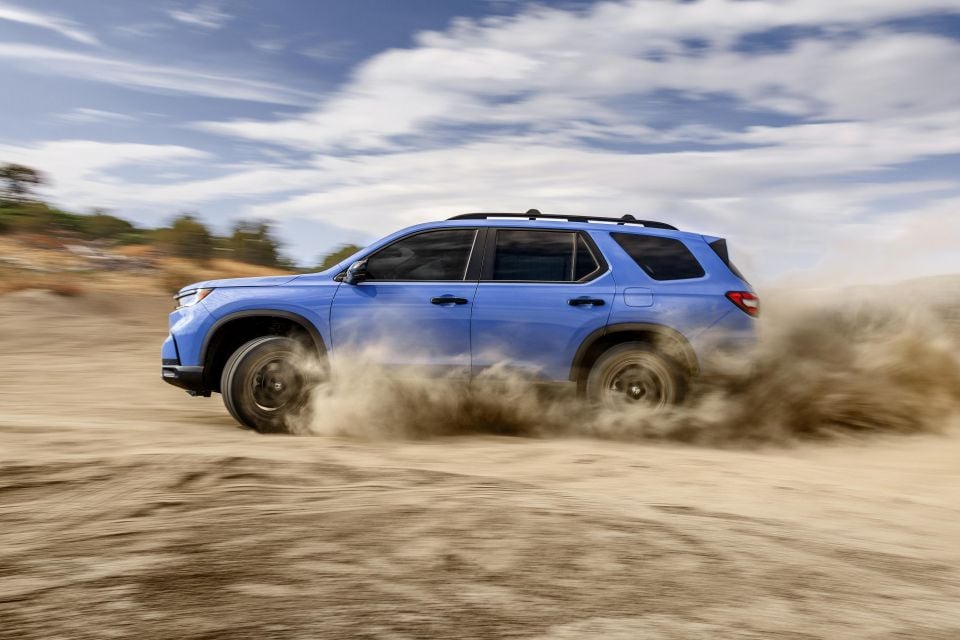
Like the flagship Elite, the TrailSport features Honda’s torque vectoring i-VTM4 all-wheel drive system as standard, with a stronger rear differential that Honda says can handle 40 per cent more torque and provides 30 per cent faster response.
Up to 70 per cent of the engine’s torque can be sent to the rear axle, and up to 100 per cent of that can be distributed to either wheel.
The Trail mode incorporates what Honda calls trail torque logic, with as much as 75 per cent of available power routed to an individual wheel for the most traction.
A new TrailWatch camera system uses four exterior cameras to help you navigate obstacles at speeds below 24km/h.
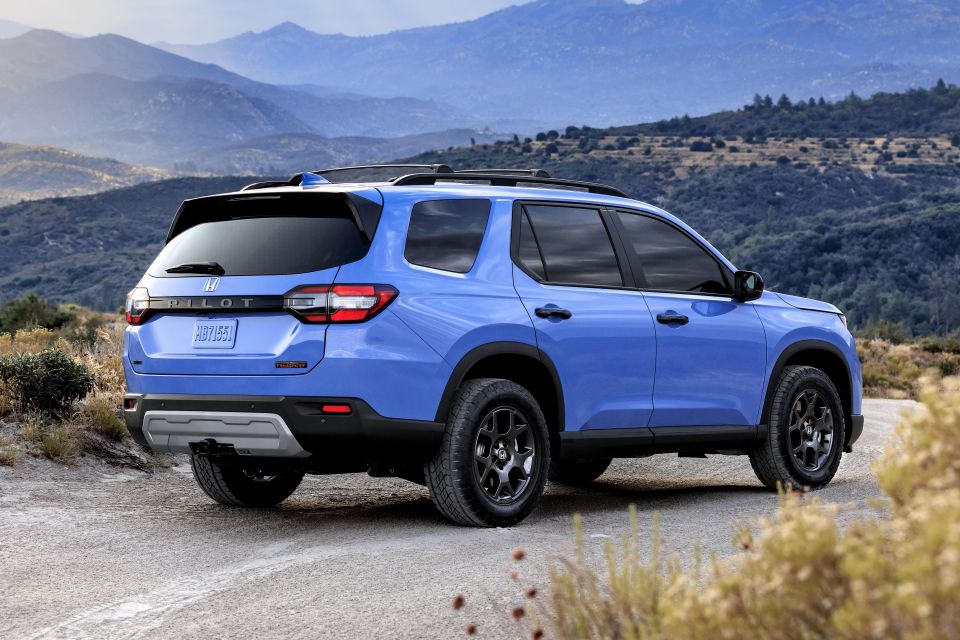
The TrailSport and Elite, like the rest of the Pilot range, are powered by a naturally aspirated 3.5-litre petrol V6 engine producing 4kW more power for a total output of 212kW at 6100rpm and an unchanged 355Nm at 5000rpm.
Honda has given the engine new cylinder heads and reduced the total number of parts, among other tweaks.
Drive is sent through a 10-speed automatic transmission to either the front or all four wheels. Honda claims a maximum towing capacity of 2268kg.
Honda says it’s made the Pilot stiffer than before, improving the crossover’s dynamics.
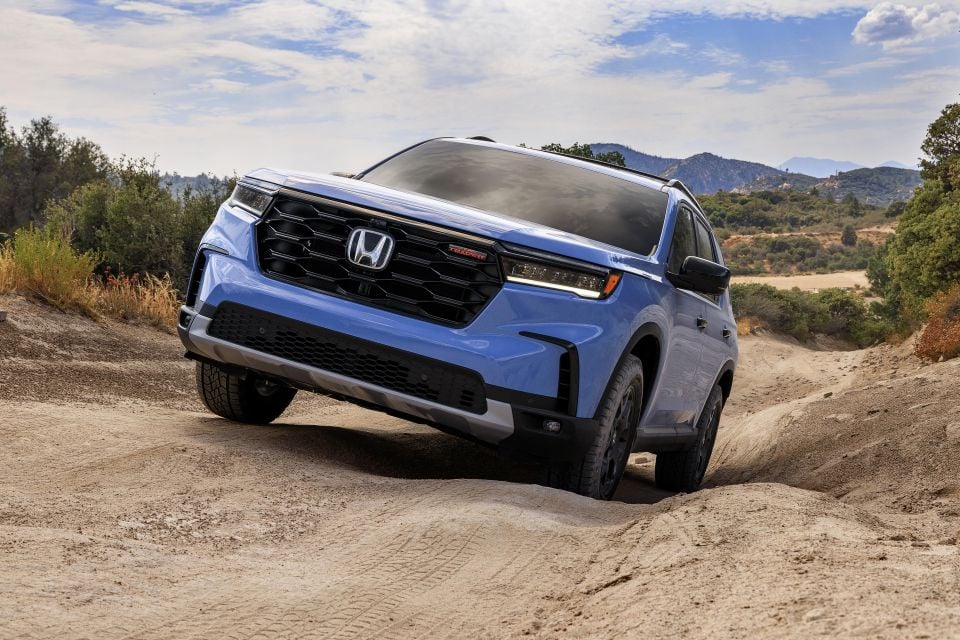
Its engineers have increased front lateral rigidity by 60 per cent and rear lateral rigidity by 30 per cent, while also retuning the MacPherson struts up front and incorporating a new multi-link set-up at the rear.
There’s a revised variable steering ratio for greater responsiveness, larger front brake rotors and calipers,
It measures 5077mm long, 1994mm wide and rides a 2890mm wheelbase, making it slightly longer and wider than a Toyota Kluger and about the size of a Mazda CX-9.
It’s 86mm longer than its predecessor and rides a 71mm longer wheelbase and wider tracks, while styling has been squared-off – though it’s still not as blocky as the box-like first- and second-generation Pilot.
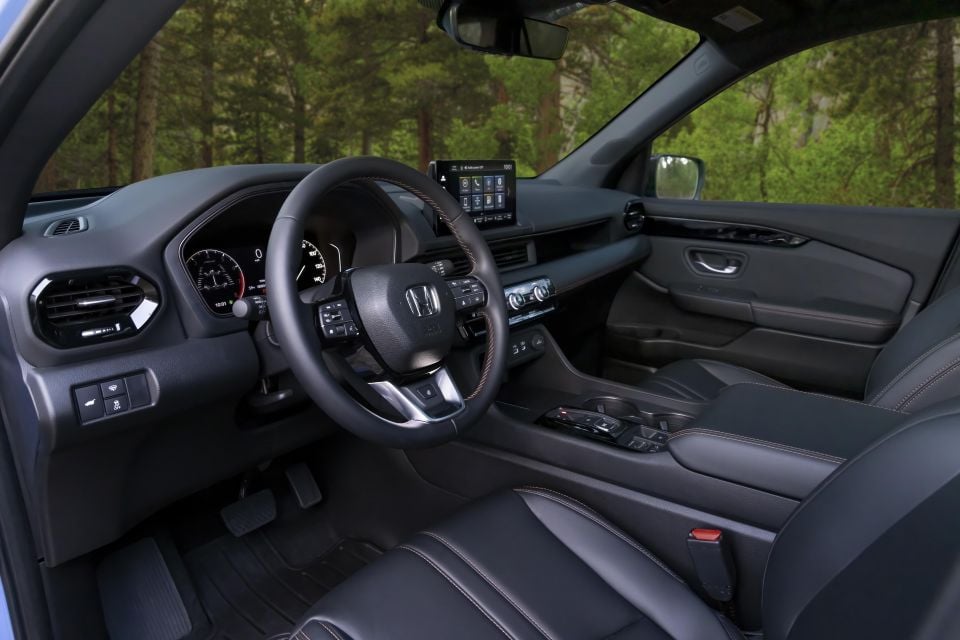
Up front, there’s a standard 7.0-inch digital instrument cluster on all bar the Elite, which gets a larger 10.2-inch display.
A 9.0-inch touchscreen infotainment system is standard on all bar the base Sport, which sticks with a smaller 7.0-inch display. Both screens get Android Auto and Apple CarPlay, but these are only wireless with the larger unit.
Storage abounds in the cabin. The centre console bin can swallow a full-sized tablet, the passenger-side of the dash features a shelf, and there are 14 cupholders in the cabin – eight of which can fit a Big Gulp, in true American fashion.
Touring and Elite models have seating for eight, with a removable second-row middle seat that can be stowed under the rear cargo floor.
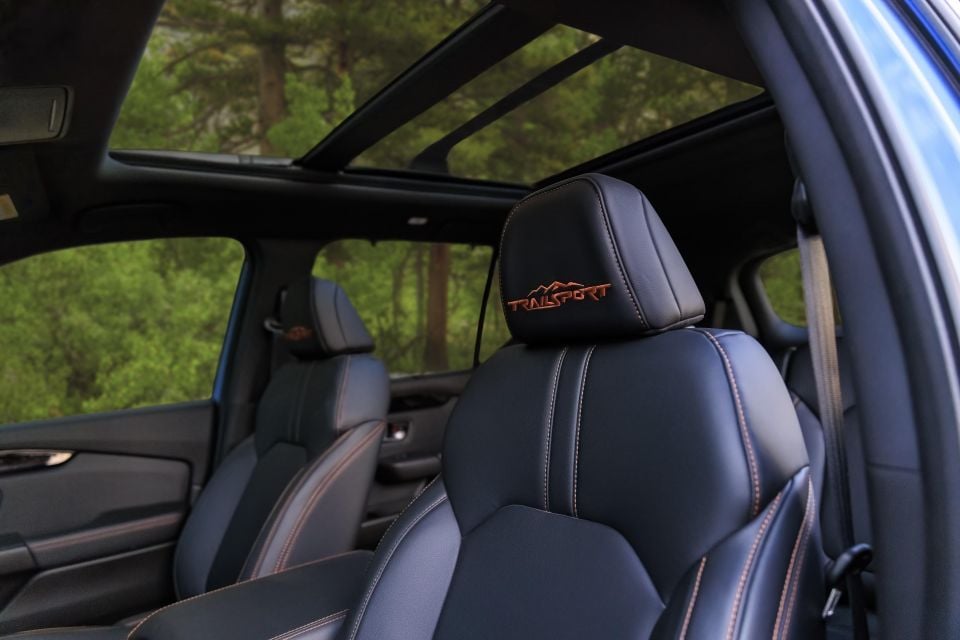
Honda says it has improved third-row comfort, while new Body Stabilizing Seats for the first row are said to reduce fatigue during long road trips.
Eight airbags are standard, including dual front knee bags. Additions to the safety suite include traffic sign recognition, traffic jam assist and rear seatbelt reminders, while adaptive cruise control and lane-keep assist continue from the old Pilot but have been updated to “feature more natural responses”.
Available features include a panoramic sunroof, heated steering wheel and ventilated front seats, while heated front seats are standard on all models.
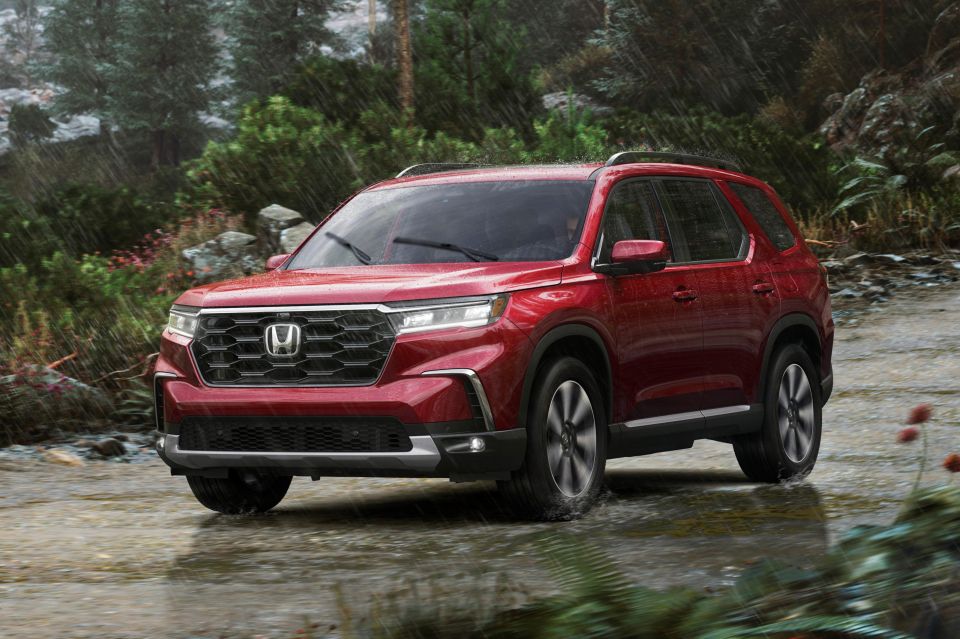
Like the related Ridgeline ute, the Pilot is built in Alabama exclusively in left-hand drive.
The Honda Pilot first entered production in 2002, as a unibody crossover – closely related to the Odyssey people mover – to replace the body-on-frame Passport, a rebadged Isuzu Rodeo, in North America.
The Passport name recently returned on a shorter, two-row version of the Pilot, which entered production late in 2018.
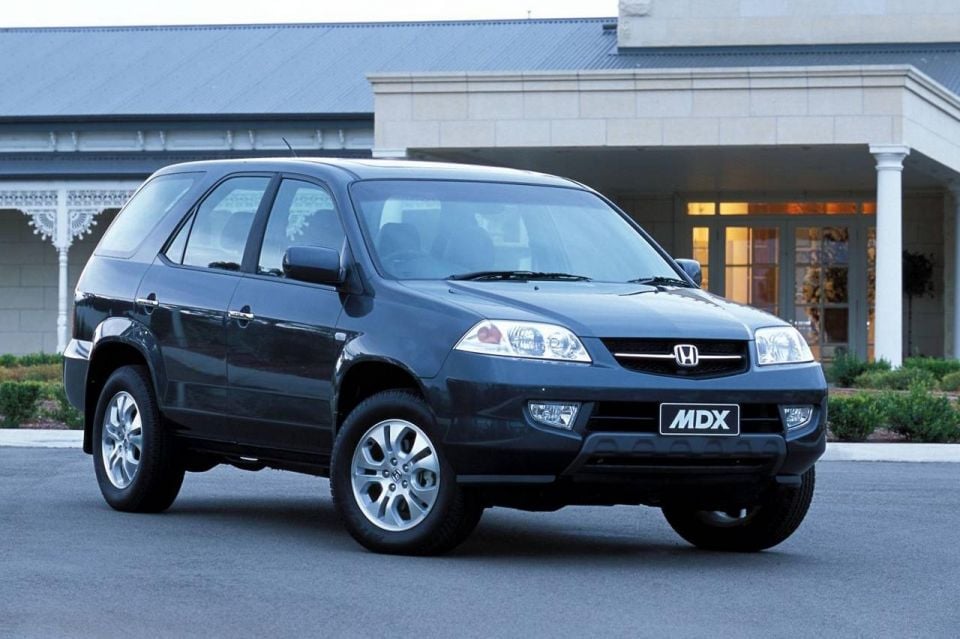
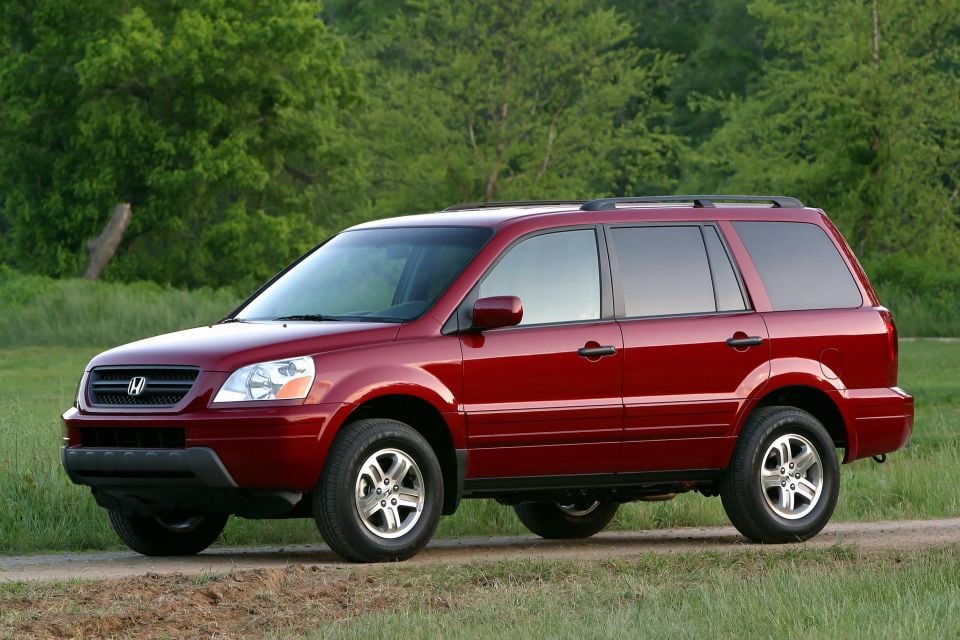
Honda Australia has offered a crossover the Pilot’s size before, in the shape of the MDX. Closely related to the Pilot, the MDX was sold here from 2003 to 2007.
It was positioned as a more upmarket model than the likes of the Toyota Kluger, which made some sense as it was sold as an Acura in most markets.
While a more mainstream large crossover would give Honda Australia a rival to top sellers like the Kluger and Mazda CX-9, the continued lack of right-hand drive availability has left it off the table.
Where expert car reviews meet expert car buying – CarExpert gives you trusted advice, personalised service and real savings on your next new car.
William Stopford is an automotive journalist with a passion for mainstream cars, automotive history and overseas auto markets.


Max Davies
15 Hours Ago


William Stopford
15 Hours Ago


Derek Fung
16 Hours Ago


Max Davies
23 Hours Ago


William Stopford
2 Days Ago


Ben Zachariah
2 Days Ago